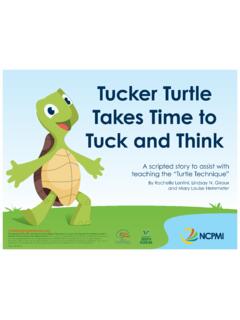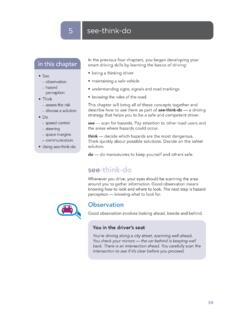Transcription of Shape Up - Basecamp
1 Shape UpStop Running in Circles andShip Work that MattersRyan SingerContentsForeword by Jason Fried 8 Acknowledgements 10 Introduction 11 Growing pains 11 Six-week cycles 14 Shaping the work 14 Making teams responsible 15 Targeting risk 15 How this book is organized 16 Part 1: ShapingPrinciples of Shaping 20 Wireframes are too concrete 20 Words are too abstract 21 Case study: The Dot Grid Calendar 21 Property 1: It s rough 24 Property 2: It s solved 25 Property 3: It s bounded 25 Who shapes 25 Two tracks 26 Steps to shaping 27 Set Boundaries 28 Setting the appetite 28 Fixed time, variable scope 29 Good is relative 30 Responding to raw ideas 31 Narrow down the problem 31 Case study: Defining calendar 32 Watch out for grab-bags 33 Boundaries in place 34 Find the Elements 35 Move at the right speed 35 Breadboarding 36 Fat marker sketches 41 Elements are the output 44 Room for designers 46 Not deliverable yet 46No conveyor belt 47 Risks and Rabbit Holes 48 Different categories of risk 49 Look for rabbit holes 50 Case study: Patching a hole 51 Declare out of bounds 53 Cut back 54 Present to technical experts 54De-risked and ready to write up 56 Write the Pitch 57 Ingredient 1.
2 Problem 58 Ingredient 2. Appetite 59 Ingredient 3. Solution 60 Help them see it 60 Embedded Sketches 61 Annotated fat marker sketches 62 Ingredient 4. Rabbit holes 64 Ingredient 5. No Gos 64 Examples 64 Ready to present 67 How we do it in Basecamp 67 Part 2: BettingBets, Not Backlogs 72No backlogs 72A few potential bets 73 Decentralized lists 73 Important ideas come back 74 The Betting Table 75 Six-week cycles 75 Cool-down 76 Team and project sizes 77 The betting table 77 The meaning of a bet 78 Uninterrupted time 79 The circuit breaker 80 What about bugs?
3 81 Keep the slate clean 83 Place Your Bets 84 Look where you are 84 Existing products 84 New products 84R&D mode 85 Production mode 86 Cleanup mode 87 Examples 88 Questions to ask 90 Does the problem matter? 90Is the appetite right? 90Is the solution attractive? 91Is this the right time? 92 Are the right people available? 92 Post the kick-off message 93 Part 3: BuildingHand Over Responsibility 96 Assign projects, not tasks 96 Done means deployed 97 Kick-off 98 Getting oriented 100 Imagined vs discovered tasks 101 Get One Piece Done 103 Integrate one slice 103 Case study: Clients in projects 105 Programmers don t need to wait 107 Affordances before pixel-perfect screens 107 Program just enough for the next step 110 Start in the middle 111 Map The Scopes 113 Organize by structure, not by person 113 The scope map 114 The language of the project 117 Case study.
4 Message drafts 117 Discovering scopes 122 How to know if the scopes are right 123 Layer cakes 124 Icebergs 125 Chowder 126 Mark nice-to-haves with ~ 126 Show Progress 127 The tasks that aren t there 127 Estimates don t show uncertainty 129 Work is like a hill 129 Scopes on the hill 133 Status without asking 134 Nobody says I don t know 136 Prompts to refactor the scopes 137 Build your way uphill 139 Solve in the right sequence 139 Decide When to Stop 142 Compare to baseline 143 Limits motivate trade-offs 144 Scope grows like grass 144 Cutting scope isn t lowering quality 145 Scope hammering 145QA is for the edges 147 When to extend a project 148 Move On 150 Let the storm pass 150 Stay debt-free 150 Feedback needs to be shaped 151 Conclusion 152 Key concepts 152 Get in touch 153 AppendicesHow to Implement Shape Up in Basecamp 156A Basecamp Team for shaping 156 Basecamp Projects for the cycle projects 158To-Do Lists for scopes 160 Track scopes on the Hill Chart 161 Adjust to Your Size 165 Basic truths vs.
5 Specific practices 165 Small enough to wing it 166 Big enough to specialize 167 How to Begin to Shape Up 169 Option A: One six-week experiment 169 Option B: Start with shaping 170 Option C: Start with cycles 170 Fix shipping first 170 Focus on the end result 171 Glossary 172 About the Author 1768 The way a team works has an enormous influence on what it can do. The process, the methods, the practices, the approach, the disci-pline, the trust, the communication style, the pace. The way the how is foundational and ll often hear people say execution is everything, but that s not quite right. In fact, it s often quite it comes to project work, and specifically software devel-opment, executing something the wrong way can destroy morale, grind teams down, erode trust, crunch gears, and wreck the ma-chinery of long-term progress. So yeah, it s done, but at what cost?
6 By doing, what have we done to ourselves? Do we really have to do that again, over and over month after month, year after year?How many projects have you been a part of that you d want to do over? How many projects have gone long, piled up at the end, and burned people out? How many projects were essentially collections of unreasonable expectations? How many projects turned teams against each other, frustrated everyone from builder to stakeholder, and ultimately would have been better off dying than delivering?Sometimes execution is everything everything that s wrong. So what does executing right look like?Over the last few years, there s been a heightened curiosity about how we work at Basecamp . People often ask us how we get so much done so quickly at such a high level of quality with such a small team. And how we keep our teams together for years and one, we re not into waterfall or agile or scrum.
7 For two, we don t Foreword by Jason Fried9 CHAPTER 1 - line walls with Post-it notes. For three, we don t do daily stand ups, design sprints, development sprints, or anything remotely tied to a metaphor that includes being tired and worn out at the end. No backlogs, no Kanban, no velocity tracking, none of have an entirely different approach. One developed in isolation over nearly 15 years of constant trial and error, taking note, iterat-ing, honing in, and polishing up. We ve shaped our own posts, workshops, and occasional conference talks have pro-vided glimpses of our own unique process, but we ve never laid it bare for all to see. This book does just that our process is fully formed, documented, and ready to go, we re here to share it with all those curious enough to listen to a new way of doing things. Explorers, pioneers, those who don t care what everyone else is doing.
8 Those who want to work better than the t think of this as a book. think of it as a flashlight. You and your team have fumbled around in the dark long enough. Now you ve got something bright and powerful to help you find a new hope you find it interesting, enlightening, and, most of all, for Fried and David Heinemeier Hansson, Basecamp s found-ers, planted many of the seeds for this book. It is informed by their values, Basecamp s culture, and fifteen years of collaborative Moesta and Chris Spiek made pivotal contributions. This book wouldn t have come together without their Bar-Yam s lectures at the New England Complex Systems Institute helped me structure the expert designers and programmers at Basecamp tried, tested, and improved these techniques over the years to ship real projects. Their efforts make this a book of practice, not 1 - INTRODUCTIONThis book is a guide to how we do product development at Base-camp.
9 It s also a toolbox full of techniques that you can apply in your own way to your own you re a founder, CTO, product manager, designer, or de-veloper, you re probably here because of some common challenges that all software companies have to painsAs software teams start to grow, some common struggles appear: Team members feel like projects go on and on, with no end in sight. Product managers can t find time to think strategically about the product. Founders ask themselves: Why can t we get features out the door like we used to in the early days? We saw these challenges first-hand at Basecamp as we grew from four people to over started off in 2003 as a tool we built for ourselves. At the time we were a consultancy designing websites for clients. Infor-mation would get lost in the game of telephone between the client, the designer, and the person managing the project.
10 We wanted Basecamp to be a centralized place where all parties could see the work, discuss it, and know what to do next. It turned out lots of companies had this information slipping through the cracks problem. Today millions of people across all kinds of industries rely Introduction12on Basecamp as their shared source of of us built the first version. Jason Fried, Basecamp s founder, led the design. His co-founder, David Heinemeier Hansson, pro-grammed it (and created the well-known web framework Ruby on Rails as a by-product). At the time I was a web designer with a focus on usability and user interfaces. I executed Jason s design direc-tion for key features of the app and collaborated with him to fill in details of the the first prototypes in July 2003 to launch in February 2004, David only worked ten hours a week. We knew we wouldn t get any-where with those ten hours of programming unless we used them very deliberately.









